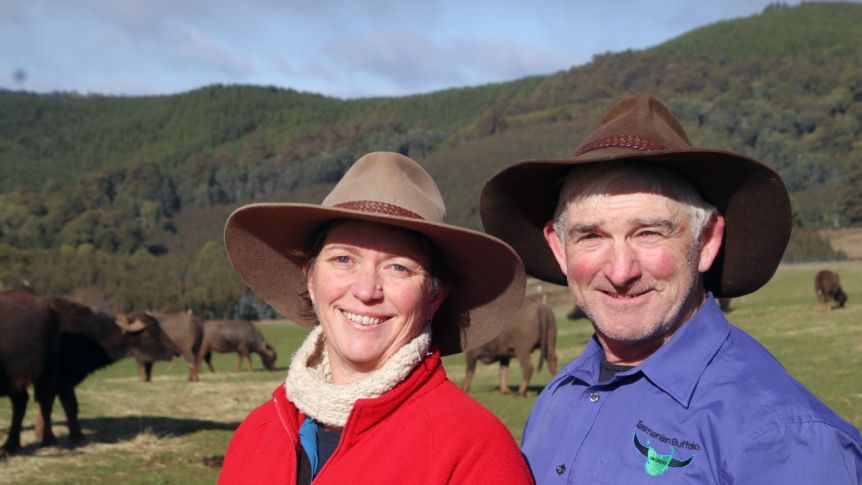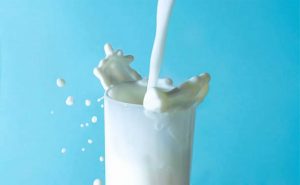Key points:
The buffalo farm started with three but now has a herd of 50
The demand for buffalo milk products is growing
Tasmania’s is one of 10 buffalo dairies around the country
Phillip Oates started the state’s only commercial herd in 1997 with just two cows and a bull he brought over from Victoria.
“We used to run fallow deer, basically they went from being worth something to worthless within three years,” he said.
“So we decided to have a go at something that no-one had ever tried.”
More than 20 years later and the farm at Preston is going strong, with the help of Phillip’s partner Sheridan Lee.
“Why buffalo? Well they were already attached to Phil when I met him so I didn’t really have much of a choice,” she said.
By the age of three, the woolly giants weigh in at about 800 kilograms.
“We started off with ‘swampies’, basically the same as what we’ve got in the Northern Territory, mainly for their meat,” Mr Oates said.
“We [use] all of the meat as much as we can from the carcass, we don’t like to waste anything.
“We’ll use, pretty much, true nose to tail and paddock to plate.”
The pair have expanded their business into dairy products, creating their own on-farm cheese processing factory from items that are re-used and recycled.
“It was from a cool room from an abattoir which we’ve obviously re-purposed and made a little bit bigger,” Ms Lee said.
“The benches are from a cafe, the vats are actually from hops, when they used to make beer, so from an old brewery.”
In the factory they produce buffalo yogurt, bottled milk, mozzarella and ricotta, with plans to one day make their own halloumi.
Migrants making most of milk
The buffalo milk has become a sought-after product, especially among Tasmania’s migrant community.
Rana Aljanabi moved to Latrobe from Baghdad in Iraq.
She was shocked but excited to learn there was a buffalo herd in the state.
“One of my colleagues here he’s also from Iraq, he says to me ‘do you know Rana, there is a buffalo farm here and they do sell milk?'” she said.
“And I was thinking, ‘What? That’s the best ever news that I heard’.”
Mrs Aljanabi uses the milk to make kaymak, a thick clotted cream that is traditionally eaten with date syrup.
In Iraq, kaymak is had for breakfast on weekends, or at celebrations.
“When I came to Australia, I miss that part of tradition and that part of the food,” she said.
“It’s a little bit similar to the cream that we buy from the shops, but more tasty.”
President of the Australian Buffalo Industry Council, Bryan Jans, said there were only 10 buffalo dairies in Australia.
“If you see a milk tanker going down the road in India, there’s a good chance that it is full of buffalo milk and not cows milk,” he said.
“Over here it’s on a much smaller scale.”
Phillip Oates and Sheridan Lee are hoping to one day export their produce right around the country.
The farmers have increased their herd from 14 buffalo to around 50 as popularity for their product grows.
But some locals are still struggling to believe that Australia’s island state is home to these gentle giants.
“Quite often at the markets people say, ‘Ah they brought it in from the Northern Territory,’ and it’s like, ‘nah mate, truly, they’re here, we breed them here’,” Ms Lee said.













